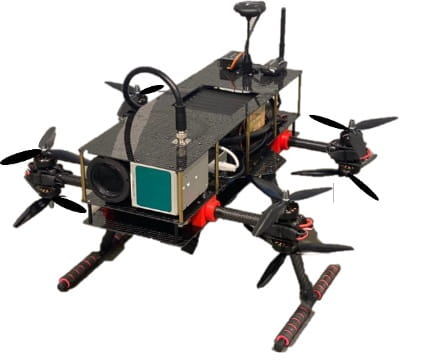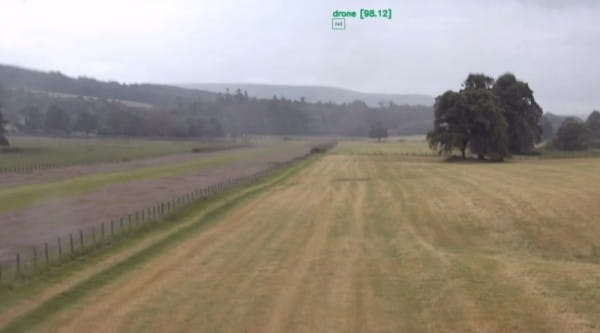Images sourced via SONY https://www.image-sensing-solutions.eu/
Quantum Aviation has kindly taken part in a Q&A about their experience choosing the Sony FCB block cameras for their flagship counter-drone product, ‘Raptor’.
OEM Automatic are delighted to provide Sony cameras for Quantum Aviation. This case study is an excellent way of showing how the EV9500 series, new to the FCB range, can be used in a real-life application.
Three camera models exist within the Sony FCB range of block cameras, with a new lens, image sensor and ISP achieving higher visibility. Choose from a line-up of 3 models, the 4M and full HD models, all in the same sized housing.
Key features include 4K resolution, 30x enhanced optical zoom, image stabilisation, new sensor technology and flare reduction.
OEM Automatic Ltd is delighted to offer the full, current range of Sony FCB cameras.
We gave readers an insight into Sonys’ latest addition to the FCB series in our previous post.
Quantum Aviation has built a business in developing sophisticated technology for airspace security. Customers include various defence and government agencies who protect critical infrastructure from potential aerial threats, and these include oil refineries, airports, etc.
Quantums’ CEO Martin Lanni and CTO Will Robley kindly answer some questions about their most recent counter-drone solution - the Raptor AI-driven tactical coaxial quadcopter.
ML: Having formerly served in the military, we have gained an intimate knowledge of the complexity of the air environment and its various unique challenges. Before forming the company, we had been involved in safeguarding the London 2012 Olympics against potential air-based terrorist acts and having planned and delivered numerous aviation projects across the globe.
With the increasing risk of attacks enabled by the use of drones and similar methods to de-liver malign effects, we saw a real need for our expertise.
WR: At the request of the UK Home Office, Quantum Aviation provided strategic advice in relation to preparations for the upcoming FIFA 2022 World Cup in Qatar, which reinforced the need for critical infrastructure to be able to field a viable counter-drone capability. We are starting to establish ourselves as a manufacturer of specialist drones, with Raptor set to serve as our flagship product.
As well as leveraging the valuable application knowledge that we have gained, Quantum Aviation also benefits from a talented team of dedicated software and robotics engineers.
Furthermore, we take a through-life approach that means, on top of the technology we provide, customers are supported across the entire life of their projects.
Case studies

ML: Raptor is a countermeasure to mitigate the threat from a drone attempting to disrupt or damage infrastructure or operations. After a threat is identified by its operator, Raptor detects and tracks its target and when commanded, launches to commence an autonomous interception, to neutralise the threat.
Each Raptor contains a powerful graphic processing unit (GPU). This takes the acquired image data and then applies a convolutional neural network (CNN) algorithm that our team have constructed to it. The GPU needs to be supplied with the highest quality imaging data.
After being introduced through supplier OEM Automatic, we started to have in-depth discussions with Sony about using its camera technology to provide this data.
WR: We had carried out extensive trials on numerous COTS machine vision and higher-end drone cameras. It was clear these would not give us the levels of performance we needed. This was why we engaged with OEM Automatic and Sony.
WR: We selected the latest EW9500H, because of its HDMI output, which makes it perfect for our needs.
ML: Yes, its ability to deal with the low light levels, plus its high resolution, were definitely the key attributes for us. The extent of the zoom was also pivotal. The Raptor needs to be able to rapidly determine the nature of fairly small targets from long range. These types of drones may only be 0.3m or less in width, and may be at distances in excess of 300m. Getting a positive identification is absolutely critical, so we could not afford to compromise on the image data that the camera was providing to the GPU.
WR: The overall weight of the Raptor unit is 6kg. It must be portable enough for a single person to comfortably carry, so use of relatively lightweight constituent parts was clearly going to be beneficial. Another challenge was fitting everything into limited available space, so having a camera that was compact enough without there being any performance trade-offs was certainly important too.
ML: The ability to fine tune the set up to exactly meet our specific application requirements was a real advantage for us. This was something that Sony could offer us, but other vendors’ solutions were unable to support to a similar extent.
WR: It was the people that really made the difference for us. The level of technical and application support that Sony’s staff have given us has been exceptional. It continues to exceed our expectations and has been a significant contribution to the success of the Raptor project. We have been able to count on round-the-clock interaction with Sony engineers, sometimes going late into the evening if we were performing field trials. The exchange of information over the last 6 months has helped us to get the project completed on schedule, and also provided feedback to Sony to help them finalise their beta testing.
ML: During our search, we looked at a number of different groups in the UK.
OEM Automatic took us by hand and talked us through the various products available for the Raptor project, adapting to our requirements and helping us to refine our decision.
We really liked OEM's level of customer engagement, they were forward-leaning, and we liked the personal touch of customer support that we received from OEM's representative - who did a great job in guiding us!
Quantum Aviation's Raptor is now going through the final test stages, with its commercial release expected in Q2 this year where they will start mass production.
If you are interested in Sony cameras or any machine vision products, we can help you like we did here.
Email [email protected] or call 0116 427 0723 to find out more.